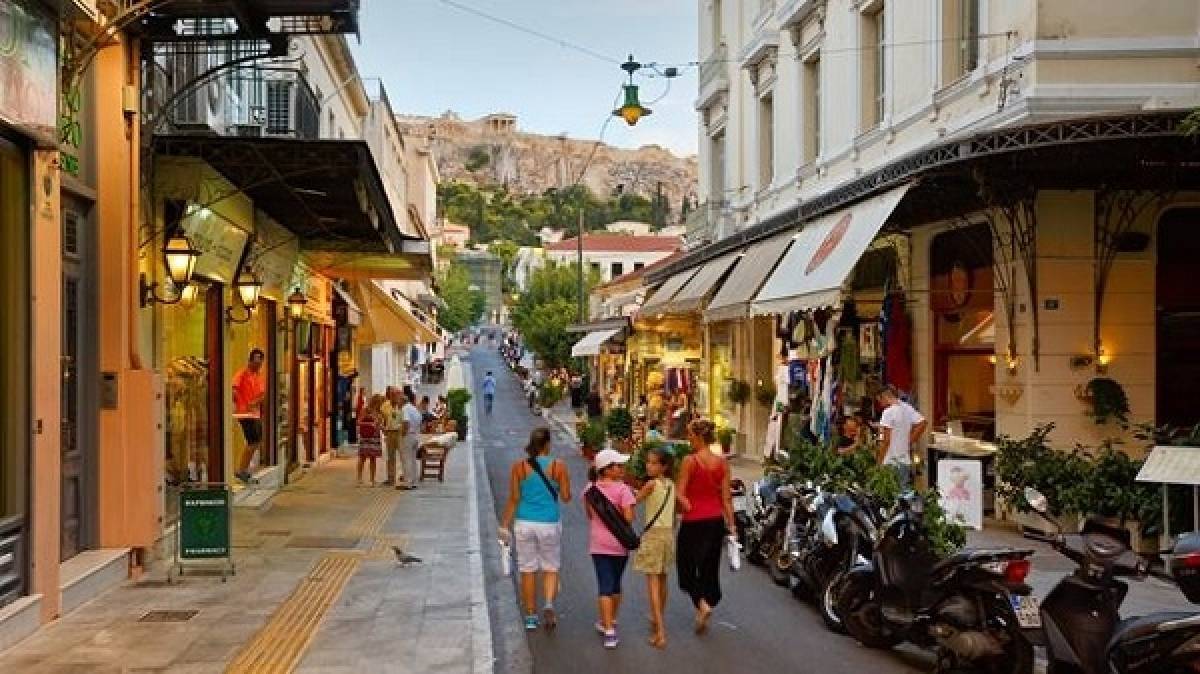Plaka is undoubtedly one of the most beautiful and picturesque areas of Athens. Walking along it relaxes and gives the feeling that you “fell into the past.”
As soon as you enter the narrow stone-paved streets of Plaka, you will have the feeling that you have been transported into the past. Plaka is the oldest and, thanks to the restoration work of recent years, the most colorful area of Athens. Pleasant colors and architecture of neoclassical houses, small gardens, carefully maintained by the residents of the area, the very atmosphere of Plaka will surely enchant you. Even the air here is different: lighter, clearer, filled with aromas, like a gift from the gods. Don’t forget to take a map with you when you are planning to walk around Plaka. Plaka may seem like a labyrinth to you, but if you fear that you are lost in its endless winding streets and tree-lined lanes, there is no need to worry. Focus on Plaka elementary simply: at the top is the Acropolis, and at the bottom is Syntagma Square and the Monastiraki area.
Once Plaka was limited to the territory on which the monument to Lysicrates is still located. This is what young people call the “Lantern of Diogenes”. Why the district was given such a name, there are different versions.
In fact, historians and researchers have often been in “confrontations” over which origin is the correct one. The most famous great Athenian writer Dem. Kamburoglu claimed that “Plaka’s name is associated with a large marble slab.” Once it was found next to the small church of St. George of Alexandria, which existed at the eastern foothills of the Acropolis, not far from Thespidos Street. Kamburoglu did not mention whether this slab was inscribed, engraved, or generally important.
Nevertheless, the great student of the history of Athens, Dimitrios Sicilianos, in his book Old and New Athens, considers this version unlikely or even insignificant. In other words, he does not think that the marble slab attracted the attention of the inhabitants so much. So much so that the entire area of Plaka was named after her.
There is another version of the name “Plaka”. Sicilianos considers the more likely version, which says that it happened, as a certain Psillas told him, from the Albanian “Pliaka”, which means old woman, old age. However, he emphasizes that “the Albanian-speaking inhabitants of Athens call the area ‘Plaka Athena’, that is, ‘old Athens’, so the name Plaka has been preserved.
“Until now, the origin of the name Plaka remains doubtful,” says the architect and urban planner Kostas Biris, who has written many valuable books about Athens and toponyms. He says that the word Plaka was Arvanite and came from the Arvanite mercenaries of the army, who were left without work, and the Turks settled them as settlers in the area of the quarter located near the monument to Lysicrates.
As soon as you enter the narrow stone-paved streets of Plaka, you will have the feeling that you have been transported into the past. Plaka is the oldest and, thanks to the restoration work of recent years, the most colorful area of Athens. Pleasant colors and architecture of neoclassical houses, small gardens, carefully maintained by the residents of the area, the very atmosphere of Plaka will surely enchant you. Even the air here is different: lighter, clearer, filled with aromas, like a gift from the gods. Don’t forget to take a map with you when you are planning to walk around Plaka. Plaka may seem like a labyrinth to you, but if you fear that you are lost in its endless winding streets and tree-lined lanes, there is no need to worry. Focus on Plaka elementary simply: at the top is the Acropolis, and at the bottom is Syntagma Square and the Monastiraki area.







More Stories
Making a mockery of the Acropolis for the sake of tourism
How Plato spent his last night – what the found papyri showed
Eurovision 2024: the first rehearsal of Marina Satti in Malmö has ended